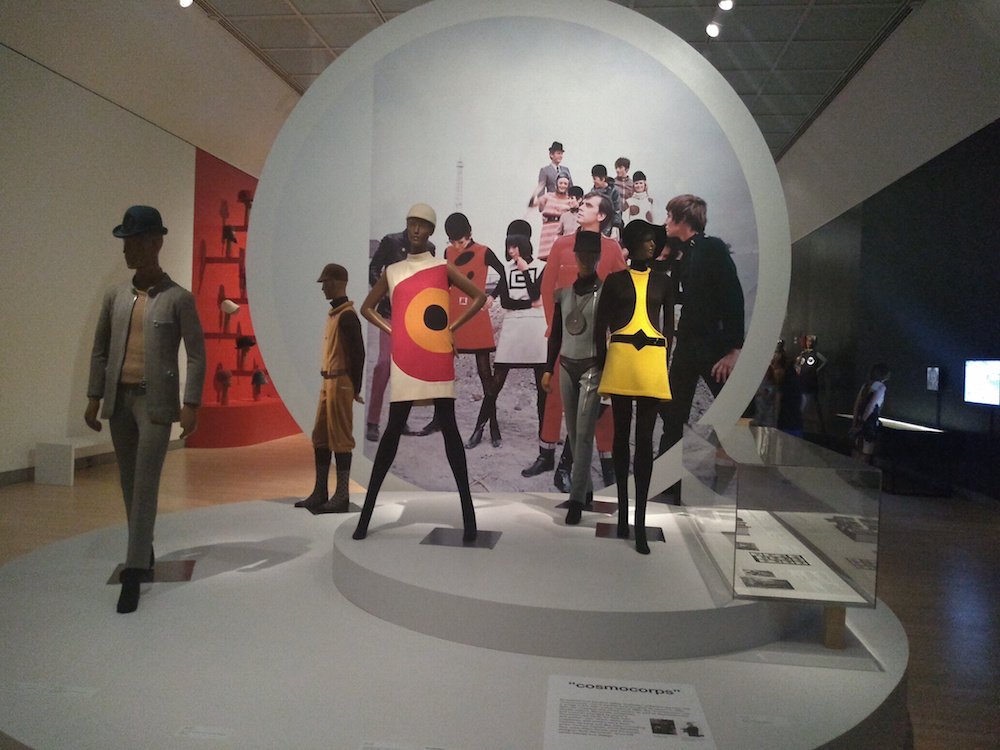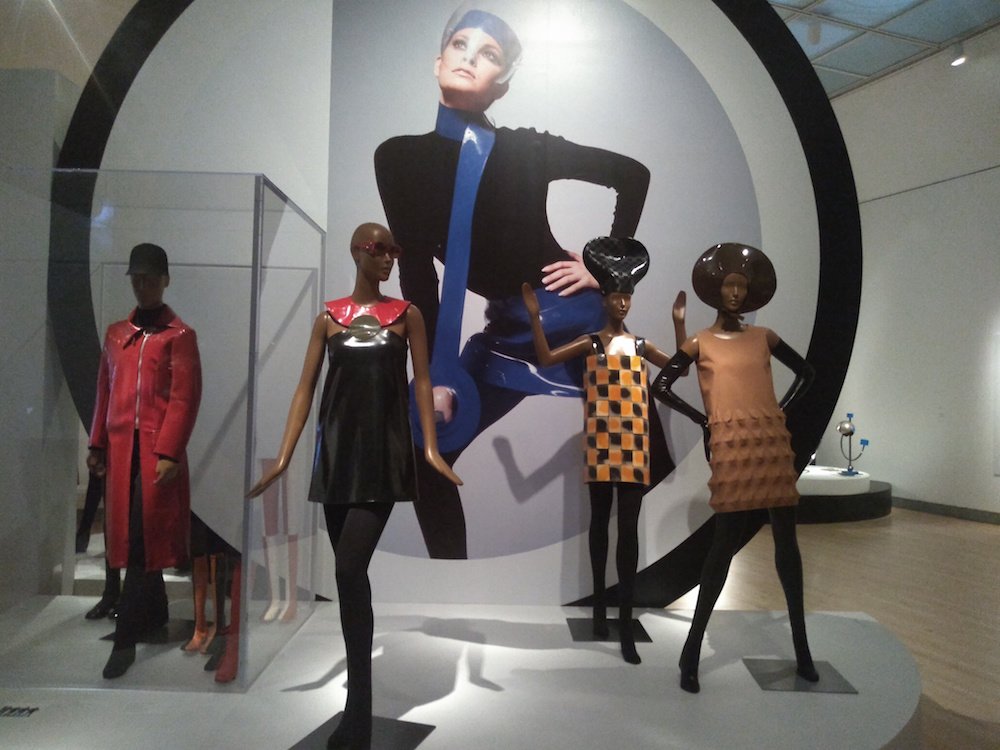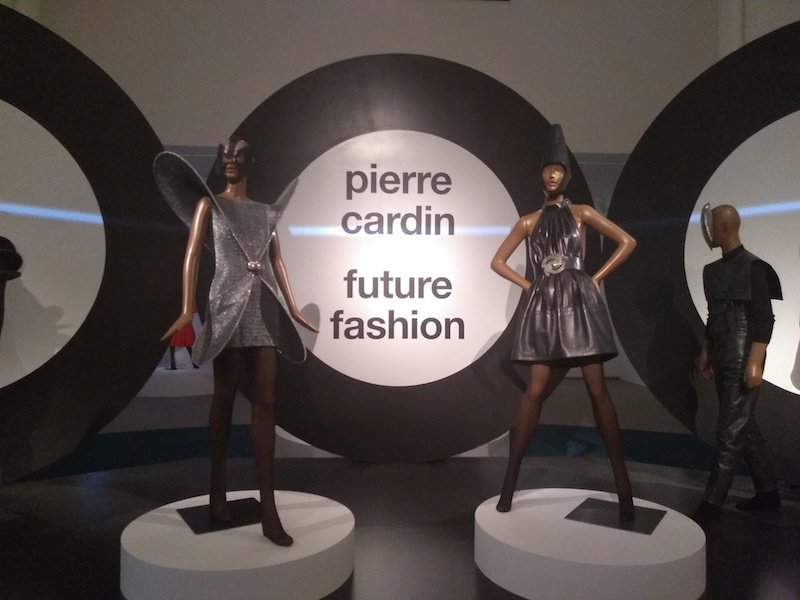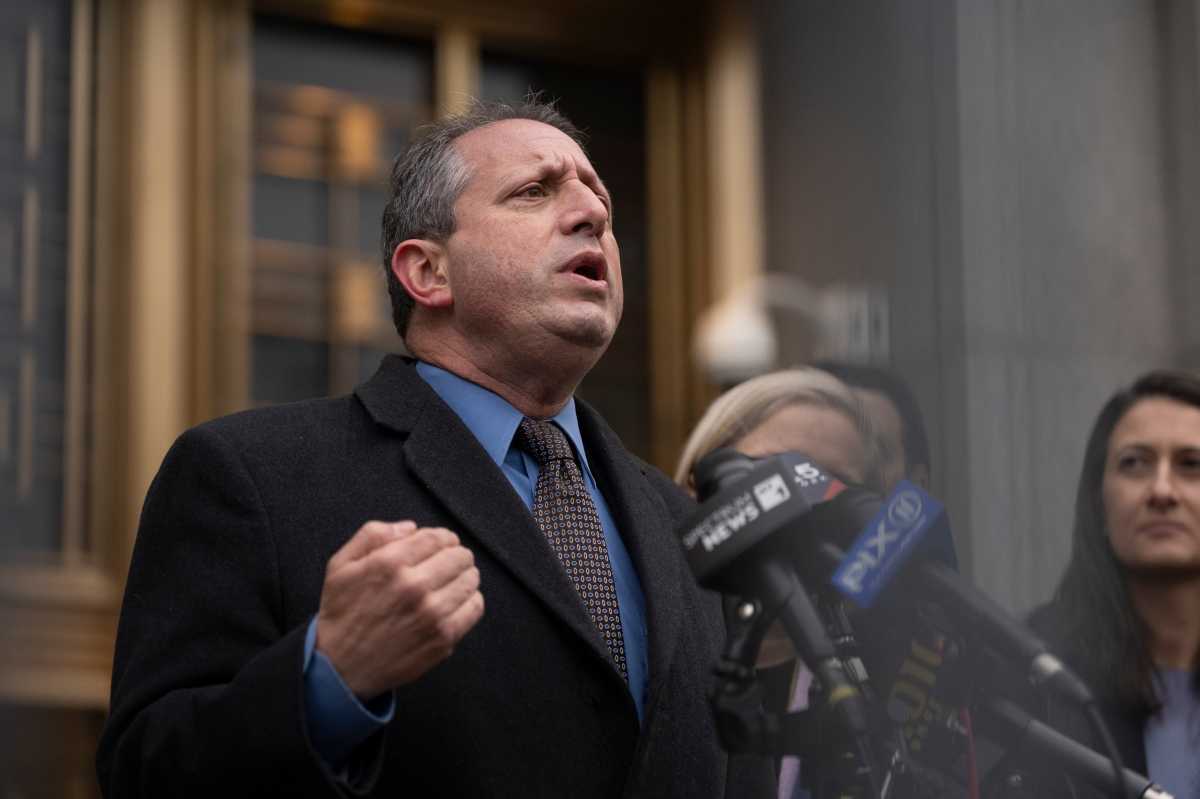Parisian Haute Couture comes to the Brooklyn Museum this Saturday with a Pierre Cardin retrospective. The exhibit, Pierre Cardin: Future Fashion, celebrates the illustrious designer who is credited with the invention of the mini skirt, and whose status as a paragon of Parisian elegance permeated the culture so deeply that ownership of a “Pierre Martian” original turned an invariably virtuous Jane Jetson into a braggart.
His seven-decade career has outstretched the province of fashion and secured his present residence in that lofty and often unattainable, even to fashions most highly regarded, province of art.
“At the Brooklyn Museum, we’re dedicated to telling the stories of trailblazers from across the art world, and that’s exactly what Pierre Cardin is,” said Museum Directors Anne Pasternak, Shelby White, and Leon Levy Director in a release on the exhibit.
The exhibition is organized chronologically, surveying pivotal moments throughout Cardin’s career.
The Brooklyn Museum hopes to introduce the designer to a new audience. I, for one, was not familiar with the designer save for vague childhood recollections of department store displays where accessories bearing his name were on view. I confessed my tenuous awareness of Pierre Cardin to Senior Curator of Fashion and Material Culture, Brooklyn Museum Matthew Yokobosky.

“I think one of the things that made Mr. Cardin very interested in having an exhibition is that he would love to have his work seen by younger people. There’s two or three generations that knew him from when he had stores in New York City, but he hasn’t had a store here in 20 years. So the younger people don’t really know Cardin. This is an opportunity to reacquaint people with him…and make new friends,” Yokobosky said.
Born almost a full century ago in Italy, Cardin spent his formative years in France, arriving there at the age of 2. As a teenager in Saint-Etienne, the self described “not intellectual” yet intellectually curious young man already had artistic inclinations. His delicacy of feeling and affinity for the arts engendered dreams of becoming an actor or dancer. His true vocation, however, revealed itself after a visit to Manby, a tailor in Vichy. Through Manby he learned the trade: to tailor, cut, trace and sew.
Cardin relocated to Paris in his early 20s armed with a recommendation for a job at fashion house Maison Paquin. “That’s how everything started. I had nothing but my ambition as luggage! I was poor but confident; confidence is the wealth of the poor,” he told Yokobosky in an interview on the exhibit.
He quickly acquired some impressive credentials which included designing costumes for Jean Cocteuas La Belle et la bete, and working for Elsa Schiaparelli and Christian Dior. He eventually left Dior to create his own house.
His designs were sought after by the likes of Elizabeth Taylor, The Beatles, and Jackie Kennedy. A vibrant red Cardin suit worn by the former First Lady, on three separate occasions, mind you, is on display at the exhibit.
There is, according to the designer, no single Pierre Cardin man or woman. His desire is to dress the whole world. Apropos to this desire, a ready to wear line was launched in 1959, much to the horror of the Haute Couture purists whose exclusivity was only a shade less central to their work than their actual designs. But Cardin, unperturbed, had a vision.
“I wanted, in the beginning, to democratize fashion and bring it to the streets, regardless of gender. My first ready-to-wear collection at the Grand Magasin le Printemps was judged by some people to be a sacrilege. I was ostracized by the Chambres de la haute couture, but that did not matter to me in the end . . . Later they offered me the position of President, which of course I refused.”

He was the first designer to license his name, using it to brand an expansive line of products. He has his own fragrance and is a restaurant owner, all of which has contributed to his sizable fortune. A fortune which has allowed him to own his company outright. His detractors deem his proclivity to commercial enterprise an impurity. Others, however, regard him as a maverick.
“Throughout his decades-long career, Pierre Cardin has proved to be a master tailor and designer, as well as an intuitive businessman,” says Yokobosky. “He truly is a twentieth-century renaissance man whose work has advanced fashion and design while continuously giving society a new and breathtaking vision of what the future might look like.”
Cardin introduced his own fabric in 1968, embracing a future of synthetic fabrics by molding a bonded, uncrushable Dynel fiber into three-dimensional patterns. In ’71 he took a trip to NASA and became the only civilian in history to wear an original spacesuit worn by an Apollo 13 astronaut.
However, his most iconic Cosmocorps, a self-invented term, and Space Age ensembles (featured prominently in the exhibition) were not inspired by mid-century space programs but born out of his prescient attraction to the Cosmos. These were fashions he anticipated before the space conquest became real. “I always imagined that man would one day walk on the moon,” he said.
“The storied French couturier has built a name for himself through his futuristic designs. His forward-thinking approaches to fashion and business have consistently established trends and practices in his field, making him one of the most influential designers of this generation,” said Yokobosky.
His creativity is not confined to fashion, Cardin has designed car interiors, exteriors, furniture, and home décor, as well as custom accessories including hats, jewelry, shoes, and sunglasses. All of which will be shown in the exhibit.
Commenting on his enduring future-oriented-now-vintage-still-voguish designs he says: “This fashion of the future was here fifty years ago because it is timeless. I have never wondered about the future of my creations. It’s simply my trademark.”
The exhibit will be on view from July 20, 2019 – January 5, 2020 at the Brooklyn Museum, 200 Eastern Pkwy in Crown Heights. Information about ticket prices is forthcoming.










